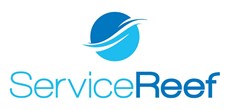Western Missions: Navigating a Changing Landscape
- Blog Western Missions: Navigating a Changing Landscape
As we continue to look at the tensions and the shift we sense in the world, I wanted to dive a bit deeper into this from a Western perspective.
In the context of missions and global outreach, a noticeable transformation is underway, particularly in Western churches and mission agencies. This shift is marked by a reevaluation of traditional strategies and a responsiveness to the new ways God appears to be working around the world. Below, we delve deeper into this evolving landscape and the factors contributing to this shift.
The Retreat and Reevaluation
In the post-Covid world, a significant trend has been observed: many Western agencies have pulled back from various countries, sometimes entirely. This has several contributing factors, including:
- Health and Safety Concerns: The Covid-19 pandemic brought with it new layers of complexity related to health and safety that have forced many organizations to reconsider where and how they operate.
- Political and Social Instability: In an increasingly unstable global political landscape, some countries have become less hospitable to Western missionaries.
- Economic Constraints: Financial struggles due to the pandemic have caused many organizations to tighten their budgets, which has a direct impact on foreign missions.
The Rise of Local Movements
In contrast to this Western retreat, there is significant growth in local, indigenous movements, especially within countries that have traditionally been resistant or closed to Western influence. This is a change we should celebrate! These movements are characterized by:
- Local Leadership: These movements are often led by individuals from within the community, who understand the culture and context deeply.
- Cultural Relevance: Because of its indigenous nature, locals are often more adept at communicating the gospel in ways that are culturally relevant and sensitive.
- Sustainability: Local movements are not dependent on foreign support and are often more sustainable in the long run.
- Access to Closed Countries: Local leaders often have access to regions that Western missionaries might find difficult to enter or work within due to various restrictions.
Wrestling with New Roles
As Western agencies observe this shift, they are grappling with several important questions:
- Partnership over Paternalism: How can Western churches and agencies move from a paternalistic model to a partnership model, coming alongside and supporting these indigenous movements rather than leading them?
- Resource Allocation: How can Western churches best use their resources (financial, educational, etc.) to empower and support these local movements?
- New Models of Engagement: What new, innovative models of engagement might be effective in this changing landscape? This might include short-term specialized teams, virtual training and discipleship, or business-as-mission strategies.
Challenges in this Shift
This change is not without its challenges for Western missions:
- Loss of Control: Moving to a partnership model often means relinquishing control, which can be challenging for organizations used to leading initiatives.
- Relearning and Unlearning: Western agencies might need to unlearn some longstanding practices and relearn how to operate within a different paradigm.
- Navigating Diverse Theologies and Practices: Partnering with indigenous movements might mean engaging with Christians who have different ways of understanding and practicing their faith.
Real-World Example:
As we challenge ourselves, consider some practices that might just be assumed within your organization. One example that I’ve heard a few times is the requirement of full-time missionaries to be an employee of a US-based organization. As Latin America and the Global South are rising in mobilization, take time to consider how you might adjust this practice in order to partner and help guide non-US based missionaries as they head into the field while wisely balancing the cost/benefit of doing so within your own organization.
Concluding Thoughts
The shifting landscape of Western missions is a poignant reminder that the work of God is not confined to any one culture or strategy. It seems clear that a significant part of the Western church’s role moving forward will be learning how to effectively and humbly partner with what God is already doing through local movements around the world.
In this season of change, our prayer should be for Western missions to be marked by humility, a willingness to learn, and a steadfast commitment to unity and partnership in the furtherance of the Gospel. Would you join us in this prayer?
Do you have other thoughts on this shift? We'd love to hear them in the comments.
Related Content





Comments